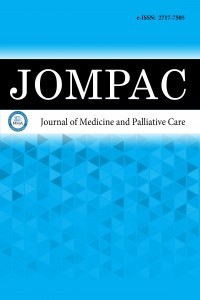1.
Shallis RM, Wang R, Davidoff A, Ma X, Zeidan AM.Epidemiology of acute myeloid leukemia: recent progress andenduring challenges. Blood Rev. 2019;36:70-87.
2.
Swolin B, Rödjer S, Westin J. Therapy-related patterns of cytogeneticabnormalities in acute myeloid leukemia and myelodysplasticsyndrome post polycythemia vera: single center experience andreview of literature. Ann Hematol. 2008;87(6):467-474.
3.
Surveillance, Epidemiology, and End Results (SEER) ProgramCancer Stat Facts: Leukemia-Acute Myeloid Leukemia (AML).Available at: https://seer.cancer.gov/statfacts/html/amyl.html
4.
Döhner H, Estey E, Grimwade D, et al. Diagnosis andmanagement of AML in adults: 2017 ELN recommendationsfrom an international expert panel. Blood. 2017;129(4):424-447.
5.
Oran B, Weisdorf DJ. Survival for older patients with acutemyeloid leukemia: a population-based study. Haematologica.2012;97(12):1916-1924.
6.
Löwenberg B, Zittoun R, Kerkhofs H, et al. On the value ofintensive remission-induction chemotherapy in elderly patientsof 65+ years with acute myeloid leukemia: a randomized phase IIIstudy of the European Organization for Research and Treatmentof Cancer Leukemia Group. J Clin Oncol. 1989;7(9):1268-1274.
7.
Tilly H, Castaigne S, Bordessoule D, et al. Low-dose cytarabineversus intensive chemotherapy in the treatment of acutenonlymphocytic leukemia in the elderly. J Clin Oncol. 1990;8(2):272-279.
8.
Fenaux P, Mufti GJ, Hellström-Lindberg E, et al. Azacitidineprolongs overall survival compared with conventional careregimens in elderly patients with low bone marrow blast countacute myeloid leukemia. J Clin Oncol. 2010;28(4):562-569.
9.
Dombret H, Seymour JF, Butrym A, et al. International phase3 study of azacitidine vs conventional care regimens in olderpatients with newly diagnosed AML with >30% blasts. Blood.2015;126(3):291-299.
10.
DiNardo CD, Jonas BA, Pullarkat V, et al. Azacitidine andVenetoclax in previously untreated acute myeloid leukemia. NEngl J Med. 2020;383(7):617-629.
11.
Guerra VA, DiNardo C, Konopleva M. Venetoclax-basedtherapies for acute myeloid leukemia. Best Pract Res ClinHaematol. 2019;32(2):145-153.
12.
Döhner H, Wei AH, Appelbaum FR, et al. Diagnosis andmanagement of AML in adults: 2022 recommendations froman international expert panel on behalf of the ELN. Blood.2022;140(12):1345-1377.
13.
Pollyea DA, Altman JK, Assi R, et al. Acute myeloid leukemia,version 3.2023, NCCN Clinical Practice Guidelines in Oncology.J Natl Compr Canc Netw. 2023;21(5):503-513.
14.
Common Terminology Criteria for Adverse Events. Availablefrom: https://ctep.cancer.gov/protocoldevelopment/electronic_applications/docs/CTCAE_v5_Quick_Reference_8.5x11.pdf(Accessed on March 09, 2018).
15.
García-Delgado R, de Miguel D, Bailén A, et al. Effectiveness andsafety of different azacitidine dosage regimens in patients withmyelodysplastic syndromes or acute myeloid leukemia. Leuk Res.2014;38(7):744-750.
16.
Heiblig M, Elhamri M, Tigaud I, et al. Treatment with low-dosecytarabine in elderly patients (age 70 years or older) with acutemyeloid leukemia: a single institution experience. Mediterr JHematol Infect Dis. 2016;8(1):1-7.
17.
Medeiros BC, Satram-Hoang S, Hurst D, Hoang KQ, Momin F,Reyes C. Big data analysis of treatment patterns and outcomesamong elderly acute myeloid leukemia patients in the UnitedStates. Ann Hematol. 2015;94(7):1127-1138.
18.
Babakhanlou R, Ravandi-Kashani F. Non-intensive acute myeloidleukemia therapies for older patients. Expert Rev Hematol.2023;16(3):171-180.
19.
Wei AH, Montesinos P, Ivanov V, et al. Venetoclax plus LDACfor newly diagnosed AML ineligible for intensive chemotherapy:a phase 3 randomized placebo-controlled trial. Blood. 2020;135(24):2137-2145.
20.
Kenswil KJG, Pisterzi P, Feyen J, et al. Immune composition andits association with hematologic recovery after chemotherapeuticinjury in acute myeloid leukemia. Exp Hematol. 2022;105:32-38.

